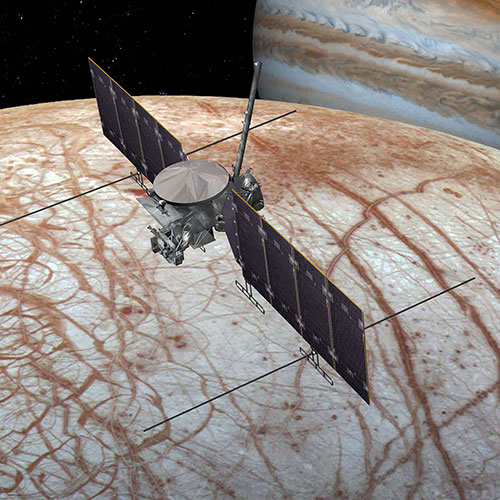Detecting life in deep space environments (Europa, Mars, Enceladus, Titan, and Ceres) requires innovation in the next level of instruments. The Organic Capillary Electrophoresis Analysis System (OCEANS) and the Digital Holographic Microscope (DHM) are two instruments being developed at JPL to detect and characterize organic compounds and to study the composition, structure, and particles preserved in ice, snow, and subsurface water, respectively.

Europa Clipper
NASA’s Europa Clipper mission will conduct detailed reconnaissance of Jupiter’s moon, Europa, to investigate whether the icy moon could harbor conditions suitable for life.

Microfluidic Capillary Electrophoresis Instrument
This instrument is designed to search for signs of life on other planetary bodies. It determines the relative abundances and chirality ratios of amino acids using laser-induced fluorescence detection. It can also inject species into a mass spectrometer through electrospray ionization, enabling a broad survey of complex organic compounds.

Miniature Submillimeter Radiometer-Spectrometer
The miniature submillimeter radiometer-spectrometer is ideal for remotely characterizing plume activity and plume chemistry at Enceladus and Europa. It provides nearly five times greater sensitivity and wider spectral tuning than the current state of the art , but with significantly reduced mass, volume, and power consumption.